A little help from a friend
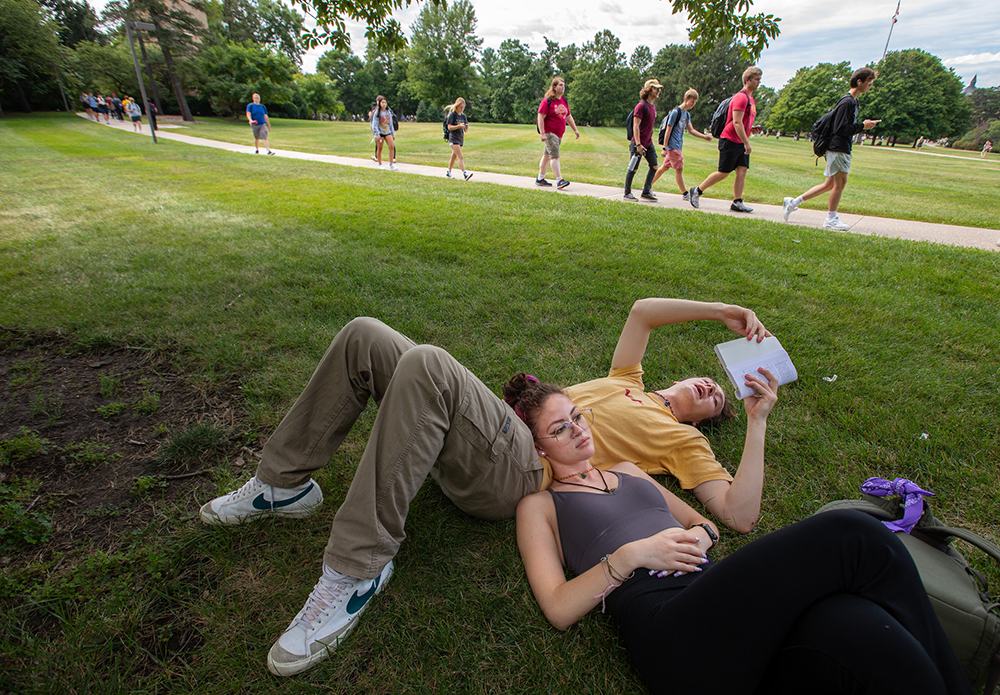
Photo by Christopher Gannon.
Freshman Andrien Peik reads from the writings of Aristotle Monday on central campus while freshman Sage Chavez listens in preparation for her philosophy class, Moral Theory and Practice (PHIL 230).
Meet Jamie Sass, P&S Council president
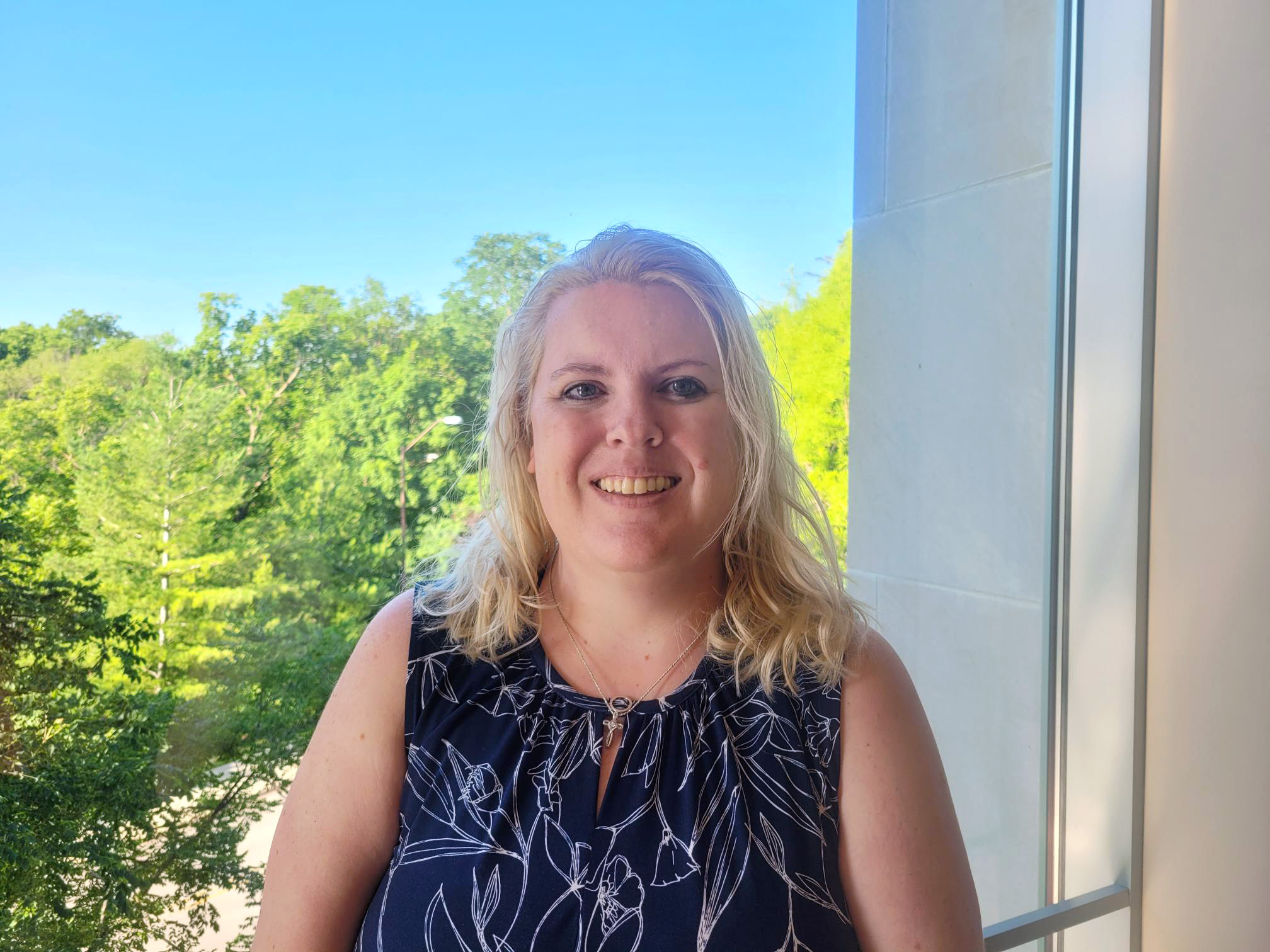
Ivy College of Business Writing and Speaking Center director Jamie Sass is the 2022-23 president of the Professional and Scientific Council. Photo by Lea Johannsen.
What are the priorities for your presidency?
One thing we're looking at, with the Great Resignation, is retaining the professional and scientific talent we have on campus. It's a point of pride for the university to have exceptional staff, and I think it should remain a point of pride. One part of that is supporting supervisors. If you read through our strategic initiatives from prior years, we've always referred to improving supervisor training. This year, it's about adding support for supervisors because there was a concern that 'training' is too narrow in scope. We know that overall, employees don't leave jobs. They leave supervisors. If we have excellent supervisors, we have better retention.
WorkFlex obviously is another big issue for us. We're working with university human resources to retain the spirit of the program and still make adjustments based on feedback.
Years at ISU: 6
Contact: jdsass@iastate.edu, 294-1994
What are the major challenges and issues for council this year?
It's the long-term challenges we're always fighting -- compensation, for instance. We'll also be challenged with, again, retention. As people move in and out of jobs, how is that going to impact how we function? How is that going to impact the everyday quality of life for P&S employees and, more broadly, everyone on campus?
What's one thing you wish P&S staff understood better about council?
That we're here as your advocates, but advocacy work can be slow. As much as I wish that we could make changes on demand, advocacy work is more subtle and takes a bit of finesse and time. That's why when you go back and look through the council's strategic initiatives you see so many issues repeat multiple years. It takes a long time to get all the pieces to move together. For someone as Type A as I am, that can feel excruciatingly slow. When people ask me, 'Can't you do things more quickly?' I say, 'Yes, I really want to, but it doesn't quite work like that.'
What's the most important lesson you've learned while serving on council?
Aside from the value of having a huge and thriving network, I'd say the biggest takeaway has been an appreciation for the depth and scope of the work that my P&S colleagues do across campus. The vast diversity of what we do is amazing. But that's also part of our challenge sometimes, advocating for a group of employees who are doing so many different things. I've said this in a couple of meetings now: What we're trying to do is focus on things that are going to affect all or most P&S employees.
What is your favorite spot on campus to relax?
I moved to Ames from Seattle when I was 14 years old. I didn't like Iowa State, mostly because I didn't want to be in Iowa. I didn't do my undergraduate here because I really wanted to be somewhere else. It wasn't until my mid-20s when I came to graduate school here that I understood Iowa State for what it is and what it could offer. My husband and I got married in the Lagomarcino Hall courtyard in 2014, and we had our reception in the Great Hall in the Memorial Union. I don't know if those are my two favorite spots to relax, but they are my favorite spots on campus.
Language skills help ISU police better serve community
There is moving for a job, and there is what Jay Meador did.
The ISU police department was looking to hire an officer with a particular skill, one Meador spent years honing.
"I found this job online saying they were looking for a Mandarin-speaking police officer, and it really interested me even though I had never thought about being a police officer before," said Meador, who was living in Taiwan at the time. "I wanted to be in a position in a university setting where I could help facilitate change, or at least be part of it."
Prior to the addition of Meador and officer Alan Liu -- both hired since March -- the department had been without a Mandarin-speaking officer since 2018.
"When I started here, it became clear to me that this was important to our community," police chief Michael Newton said. "We have a large Mandarin-speaking population, not only on campus, but in the Ames community."
Newton said the department aims to serve the entire community, and officers who previously responded to situations with Mandarin speakers used LanguageLine or an interpreter without law enforcement background to assist. LanguageLine provides on-demand language interpretation, but Newton said officers feel trepidation about getting the correct information across when going from officer to interpreter to individual and back during an investigation.
"We want to represent our community with a diverse group of officers who want to do the job," he said. "Having the ability to talk to people in their native language is much more personable and a better way to take care of victims or talk to a suspect."
Meador and Liu will interact with groups across campus, help with ISU Police outreach and build relationships that may be missing with Chinese-speaking faculty, staff and students. The multilingual officers also can assist law enforcement agencies in the area, if needed.
The department also utilizes officer Karime Massaro's ability to speak Spanish fluently to help with translation throughout the law enforcement community. She has assisted departments as far away as Ottumwa since joining the department.
From China to Ames
Meador, who joined the department in March and has completed his academy training, studied Mandarin as a compromise with his parents after he completed his undergraduate degree in business at Spring Arbor University in Michigan. He attended Fudan University in Shanghai, China, in 2007 to learn the language.
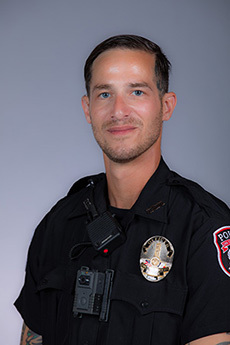
Meador
"My parents wanted me to get a master's degree in something, so I suggested I do a language study instead," said Meador, who also is learning sign language. "I really like skateboarding, and I went to Shanghai because the world's largest skatepark was just built there. It was really two birds with one stone."
After learning the basics, Meador stopped taking classes after a year and a half and became fluent by using it in his daily life over the next decade in the country. He remained in China for 12 years doing a variety of jobs -- including restaurant owner and filmmaker -- before moving to Taiwan for three years. He returned to the United States last December for his current job and believes his travels will benefit him when interacting with international groups on campus.
"The ability for me to talk to someone in Mandarin is not just about our ability to communicate, but I realize a lot about where they grew up, where they are coming from or some of the reasoning for the things they are doing," he said.
Succeeding in a new place
Liu's journey to become an officer began with his mother trying to motivate him to find a passion.
"One day she just told me I was going to the United States to study, and they had already signed me up," he said.
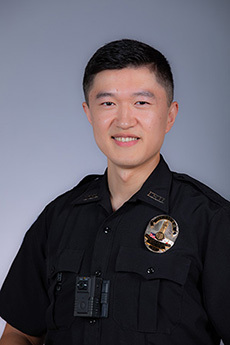
Liu
Liu lived in China until coming to America at 19. He spent the first eight months in Georgia learning English and earning his GED before attending the University of the Cumberlands in Kentucky. He graduated with a degree in accounting, but soon realized a career in law enforcement would integrate his passions of sports, martial arts and self-defense.
Liu kept tabs on the position with ISU police but needed to become a U.S. citizen before applying. That required being in the country for three years making it official in 2021. He joined the department in August and will go through academy training until December. His language skills are invaluable, but it is the responsibility to help others that most appeals to him.
"In college, I joined a lot of programs that helped the surrounding community, from building houses to educating young students about other cultures around the world," Liu said.
He also believes his efforts to learn English help when encountering someone who doesn't speak the language.
"I have been through that, and I can still deeply remember being at that stage," he said.
Serving the community
Massaro grew up in Mexico and came to the United States when she was adopted at 6 years old. She worked as a detention officer with the Story County Sheriff's Office before coming to the ISU police department in 2018.
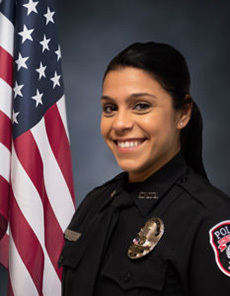
Massaro
Although the need for Spanish translation on campus is not an everyday task, Massaro's skills are vital to the region when she helps Ames and surrounding departments and agencies translate, both on and off duty. She often assists the sheriff's office and the Ames Police Department with translation for situations from citations to domestic issues.
"Story County has a large population of immigration customs enforcement inmates, so I was basically the sheriff's office's liaison and did their orientation when I worked there," she said. "It is easier to connect with someone who already doesn’t trust law enforcement by speaking their language."
Massaro remembers situations from her youth when people, including her mother, would avoid seeking police help because of fear of law enforcement. It is a situation she hopes to have a positive impact on with her work.
"Growing up in that mentality where people who were immigrants at one point are just terrified of the police, I want to help in any way I can to change that," she said.
Some simple tips for staying secure online
As Iowa State's director of information security, Rich Tener leads efforts to protect university computers and networks from attacks. The most common threat on campus is phishing, attempts to trick a user into disclosing personal information such as an account password.
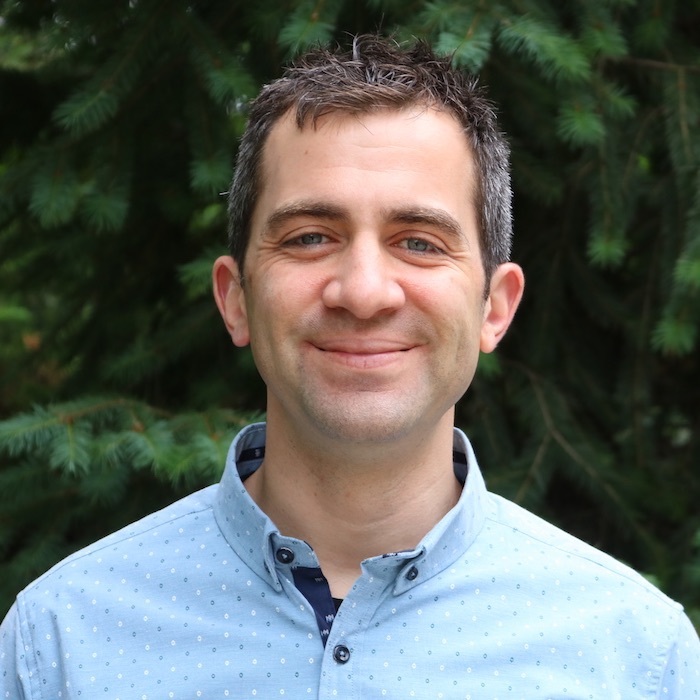
Rich Tener
So Tener -- and the information technology services (ITS) security team -- often advises the campus community on how to avoid getting phished. He's also personally experienced it. He once entered his Yahoo password after clicking on what he thought was a link to a friend's photo gallery. He realized his mistake when the photos didn't load.
Tener's experience falling for a phishing attack points out a couple of lessons. First, if it can happen to an experienced digital security expert, it can happen to anybody. Which is why the second lesson is important: Pay attention and act quickly if you suspect you've been had. Tener changed his password immediately, before his friend let him know that he'd been hacked.
"Be suspicious. If you click on something and don't get the expected result, don't go, 'That's weird,' and forget about it," he said.
Here are some other digital security tips from Tener to keep in mind this fall.
Keep it unique
If Tener could wave a magic wand that compelled all ISU students and employees to use one method to make their digital accounts more secure, his wish would be simple and effective: Stop reusing passwords. You've heard it before, no doubt. But it's the No. 1 risk you can control.
Unique login credentials prevent hackers from leveraging one stolen password to break into numerous associated accounts. Hackers make hundreds of attempts a day to access university accounts with presumably stolen passwords, most of which fail, Tener said.
Using a digital password manager such as LastPass or 1Password can help ensure you're using a different strong password for every account. But using a base password with minor variances or even writing your passwords down in a notebook at home also are safe, he said.
"Even if a password is predictable, that's OK because hackers aren't trying to guess them. They're just stealing passwords from one site and trying it on another," he said. "And it's unlikely anyone is going to physically come into your house and steal a password list."
Attacking authentication
Faculty, staff and students must use Okta's multifactor authentication (MFA) to access most online university services, an essential layer of protection that requires a second form of identity confirmation such as entering a text code or clicking "Yes, It's Me" on the Okta Verify mobile app.
To overcome MFA, digital scammers increasingly are phishing for more than your password, Tener said. That could mean asking for the access code sent by text message or repeatedly requesting a verification from the Okta app.
Don't disclose an MFA code to anyone, except to enter it into the usual login screen. "We will never ask for that," Tener said of information technology services (ITS).
And no matter how many times the alert pops up on your phone, never confirm an Okta login unless you're actually logging in. Tener said users sometimes accidentally confirm a fraudulent login via the Okta app because they're used to clicking "Yes" and do it out of habit. Other times, it's because they're tired of clicking "No."
"Attackers may try to keep pushing the notification until you click 'Yes,'" he said.
A simple plan
One simple way to avoid inadvertently compromising your ISU Net-ID is to be extra skeptical when asked to enter that information anywhere but the Okta login screen. Tener said Okta is integrated with most services that require a Net-ID, and ITS works continuously to add it to university websites and vendors.
"When I use my ISU login, it's almost always in an Okta login box," he said.
Only enter your password into a website you trust, and look at the URL to see if anything looks off. Consider checking with the ITS security team before entering your Net-ID at a login prompt that's neither Okta nor an iastate.edu website, especially if you're not familiar with the website.
Remote work caution
University employees working remotely should consider what sort of data they're accessing before using a personal device for work. ISU-issued laptops and computers, even when used off-campus, have digital protections such as a firewall and anti-malware software, Tener said. Your personal computer may not.
"It's OK to use a personal device for work, but not if you're dealing with highly sensitive student or research data," he said.
Personal protection
It's required on your ISU email, but make sure MFA protection also is enabled on your personal email account, Tener said. It's an especially risky target for attacks.
"If someone can log in to your main email account, they can recover passwords on all of your accounts and hijack everything," he said.
So now what?
If you suspect you've been phished, change your account password immediately like Tener did after signing in to a fake Yahoo login. Hackers often collect passwords to use later or sell, he said.
"You might have a little time. All is not lost," he said.
If you think your Net-ID has been stolen or you have other questions or concerns, contact the ITS security team at security@iastate.edu or call the solutions center at 294-4000.
For more information
For additional security tips, read Inside's coverage of Tener's presentation at the Professional and Scientific Council last fall on avoiding ransomware or see the information security knowledge base articles in the ISU Portal.
New facilities plan outlines 30 years of renewing in-demand spaces
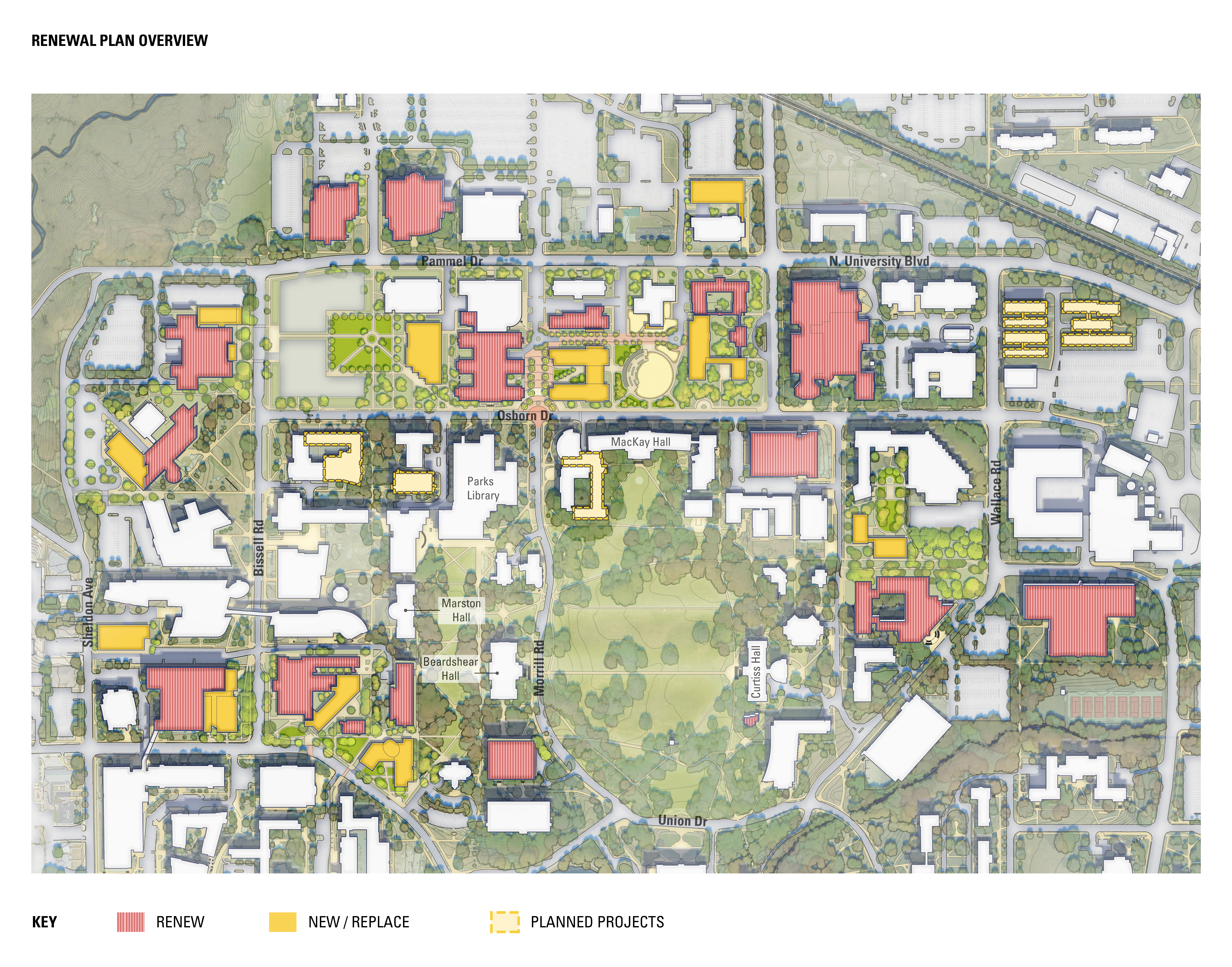
This central campus map illustrates many of the proposed building renovations and new construction over the 30 years of Iowa State's new strategic facilities plan. Image courtesy of facilities planning and management.
Larger image
The same June day it approved Iowa State's nine-year strategic plan, the state Board of Regents signed off on a 30-year strategic facilities plan for the university. The plan is a blueprint for investing in campus buildings to offer modern, functional spaces for student learning and research success. It emphasizes renovation when possible -- and demolition/replacement when not -- and sequences numerous projects that will impact more than 40 buildings.
Over three decades, the facilities plan would modernize or replace 48% of general fund space on campus, roughly 2.3 million square feet. More than 10% of that volume is tied to projects already planned, for example, replacing LeBaron Hall and departmental research greenhouses at Wallace Road and University Boulevard, and two phases of a new veterinary diagnostic laboratory.
Campus planner Chris Strawhacker, facilities planning and management, who led the team that developed the plan, said two other goals of the strategic facilities plan are to:
- Reduce Iowa State's deferred maintenance backlog, currently at about $600 million.
- Minimize the net amount of new space, in part as a strategy to limit future building operations and maintenance expenses.
Strawhacker said an assessment completed early in the planning process that stacked space needs against existing inventory determined the total amount of space on campus is about right. However, ISU needs more teaching and research space and less administrative and office space. Student support and general support space (within the general fund umbrella) is about right, it found.
An investment history
Strategic facilities plan:
- Succeeds a 1991 campus master plan.
- Developed from planning that began in 2019 with an assessment of both the condition of buildings and building systems, as well the usefulness of spaces for student learning and research needs.
- Collected ideas and input from 50+ stakeholder meetings, 1,200 survey responses and four open houses.
- Assumes enrollment ranges from 30,000 to 35,000 students and the current level of university funding doesn't change significantly.
- Doesn't include spaces held by auxiliary units such as dining, student residence, athletics, recreation services, alumni association or spaces home to federal units such as Ames National Laboratory or U.S. Department of Agriculture.
To implement the strategic facilities plan, Iowa State will need to invest $40 million to $45 million per year for the 30-year life of the plan, according to Paul Fuligni, assistant vice president for facilities planning and management and a member of the strategic facilities plan team. That's not as unlikely as it might sound. For the past 10 years, on renewal projects like Marston Hall or new facilities such as Elings, Troxel, Advanced Teaching and Research Building and the Student Innovation Center, Iowa State has invested about $60 million per year in general fund facilities.
"This university has sustained this level of capital spending for years," Fuligni said.
A summary: Four plans within the plan
The strategic facilities plan contains four focus areas, and projects from the four may occur simultaneously. The central campus map (above) illustrates many of the proposals in these four plans:
- STEM facilities in the north central area of campus, organized into three stages: physical and material sciences, plant sciences, and human sciences and psychology. Over three decades, the plan would renovate, replace or add buildings -- many along Osborn Drive -- to provide modern laboratory and classroom spaces for the sciences.
- Four college-specific plans for Engineering, Design, Veterinary Medicine and Agriculture and Life Sciences. Key changes include additions to Town, Black and Design buildings; the approved new Therkildsen building for the industrial and manufacturing systems engineering department; renovations of Town, Black, Design, Communications, Kildee, Forker and Vet Med buildings; and demolition of the Armory and nine small buildings at the Vet Med Research Institute.
- Interdisciplinary hubs for instruction (Carver Hall) and communications (new facility). Key impacts include renovations of Lab of Mechanics, Pearson, Carver and Food Sciences buildings; demolition of several inefficient, outdated buildings; and a new interdisciplinary communications facility for programs in the colleges of Agriculture and Life Sciences and Liberal Arts and Sciences.
- Larger spaces for student services and student health and wellness. Over 30 years, key changes include renovation of Sloss House and Beyer Hall, a larger facility to replace the Student Services Building, and an east addition to Beyer shared by student health, counseling and wellness services. A vacant Thielen building would become available for other uses.
The plan provides a framework for reinvesting in facilities. Additional planning, design and approvals will be required to implement the projects proposed in each focus area.
Student Innovation Center's makerspaces open for possibilities
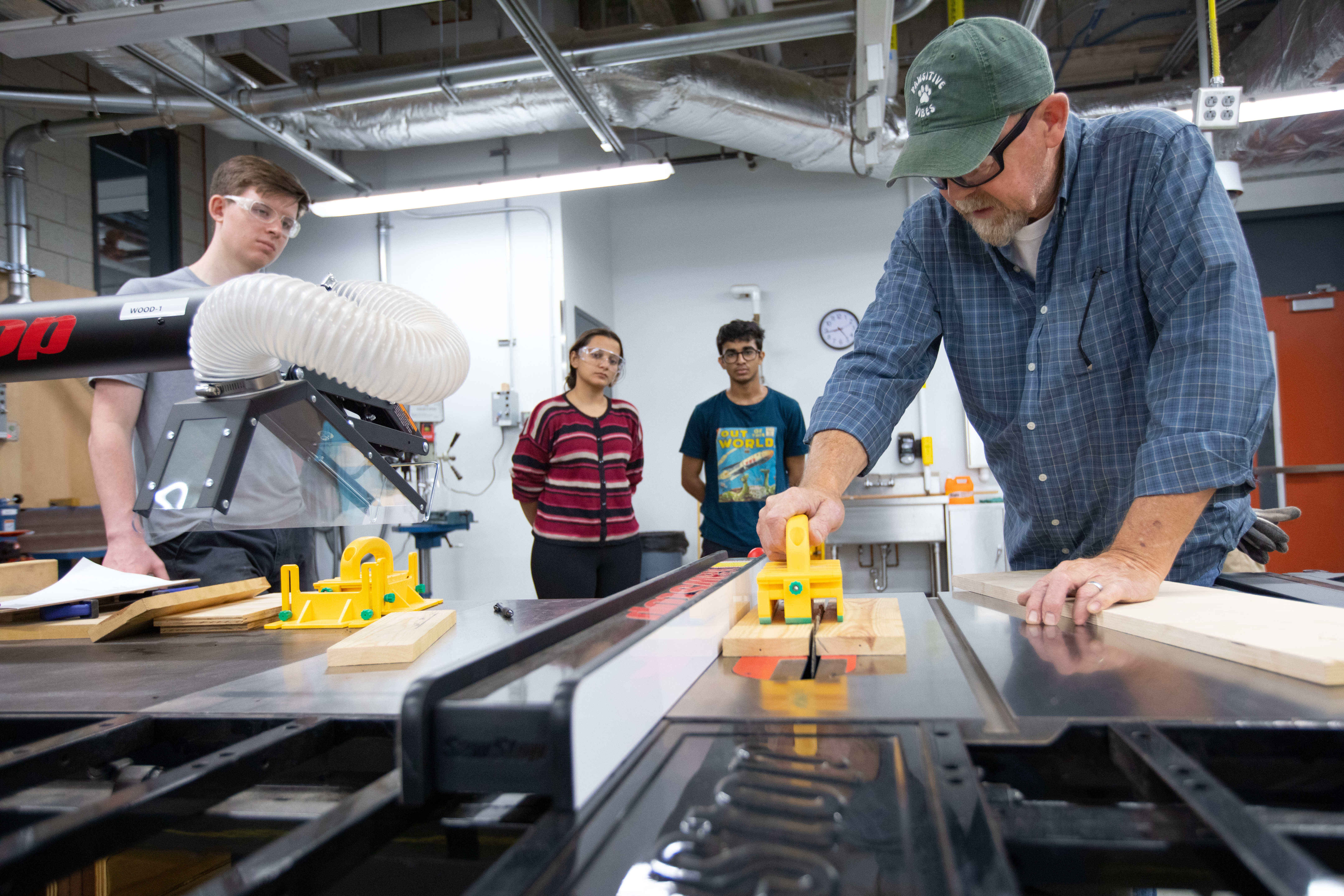
Shop supervisor Mark Hjeltness, right, trains student employees Paull Jeev, Maithilee Bahirat and Logan Root on a table saw in the Boeing Advanced Fabrication and Assembly Metal and Wood Shop in the Student Innovation Center on Aug. 22. Photo by Christopher Gannon.
The Student Innovation Center's makerspaces -- studios, shops and labs designed for students, faculty and staff to create and collaborate -- are fully operating this fall for the first time since the center opened in 2020, providing the tools and training to turn innovative ideas into concrete reality.
The Student Innovation Center's open house Sept. 1 (4-6 p.m.) will mark the debut of the makerspaces. The event will feature makerspace demonstrations along with giveaways, displays and activities throughout the building's five floors to promote the opportunities colleges and student organizations offer at the center.
The makerspaces include:
- The Boeing Advanced Fabrication and Assembly Metal and Wood Shop (room 1211), which has a variety of large saws, lathes, presses, sanders, mills and other fabrication equipment
- A digital media production studio (room 0140) with space and tools for recording and editing videos, television programs, and podcasts and other audio
- An electronics, textiles and 3D printing shop (room 2222) with numerous 3D printers, gear for working on electronics, and textile production equipment, including two automatic knitting machines and a digital loom
- The Primo Ceschia Family Digital Modeling and Visualization Laboratory (room 2261) for producing virtual and augmented reality
- A heavy metal shop (room 0235) equipped with everything needed to work with metal rod, bar, and sheet stock material (sign up through the metal and wood shop)
- A composites shop (room 0212) for creating and laying up composites, outfitted with a walk-in freezer
- Rooms for dynamometer engine testing (rooms 0244 and 0246), where hobbyists and student organizations can test the durability of engines
- A paint and finishing shop (room 1221) with tables and a paint booth with ventilation and filters so painting can be done indoors
The makerspaces are available to faculty and staff to encourage collaboration and interdisciplinary connections, said building services manager Jacob Cantu, who supervises makerspace operations. Experience level doesn't matter, and all Cyclones are welcome.
"The primary focus is students, but this is definitely a resource for faculty and staff, too," he said. "We want these spaces to be used, and the possibilities in these spaces are endless."
Hands-on innovation
Opening the full suite of makerspaces was more than two years in the making, for a variety of reasons. Now that they are fully open, it will be exciting to see what's made there, said Wendy Kisch, Student Innovation Center director of operations.
"We hope to engage all students in creative thinking and expand their innovation capacity through hands-on learning in the makerspaces," she said. "They are for all students in all majors, and they give all students opportunities to create, experiment and innovate in a variety of ways."
Safety and supervision are vital in the makerspaces, so training is required before using them. To sign up, fill out the form on the makerspace webpage. Users are added to a Canvas course to complete an online training session and take a short quiz on safety protocols. That's followed by in-person individualized training with shop supervisors.
All training materials are provided at no cost. After that, users must provide their own project materials. Users are not charged for machine time, training or consultation.
Once fully trained, students, faculty and staff can use equipment for personal or class projects. Users cannot operate a business out of the makerspaces. Professors are welcome to bring their classes into the shop for group training, but regular classes cannot be held or conducted in the space. The shop will remain open for others to use if a class is training in a space.
The Student Innovation Center is open during fall semester weekdays at 7:30 a.m. on weekdays and 9 a.m. on weekends. It closes at 2 a.m. Sunday through Thursday and 8 p.m. on weekend nights. Makerspaces will be open daily 9 a.m.-8 p.m.
Unique spaces
The makerspaces aren't the only areas of the Student Innovation Center devoted to creation and invention. The Gaffer's Guild student organization operates a glassblowing studio on the first floor, and various other student organizations use a lower-level assembly bay to build. There are specialized college-run spaces, such as the College of Human Sciences' culinary lab on the third floor and the College of Design's first-floor print-making room. And the center has many reservable collaboration spaces and general university classrooms.
Also, there are some facilities similar to the makerspaces in buildings across campus. But those are typically associated with classes, lab work or other academic activities. The Student Innovation Center's makerspaces are unique because they are for everyone on campus, offering the capability to create to all students, faculty and staff willing to step outside of their box and make an impact.
"The Student Innovation Center is the place to create for clubs, inventors, entrepreneurs, hobbyists and the generally curious," said James Oliver, Pithan Executive Director of Innovation. "Our friendly shop staff is ready to provide training to one and all, so I hope to see these wonderful resources filled with Cyclones from every corner of campus."
The spaces are made to grow and change over time. Cantu said future programming in the spaces could include demonstrating project examples, which would pair well with selling kits with the needed supplies. Partnerships with external nonprofits, businesses and other organizations could be possible. To stay true to their aim, the spaces need to remain flexible and adapt as needed, Cantu said.
"We want to make sure the equipment in the space is what people want, and that the structure is working. There's going to be constant change," he said.
Workday update lets employees share their pronouns
An update in Workday is aimed at making the employee experience more inclusive. Today (Sept. 1) employees can choose from an expanded list of individual pronouns and also choose whether to share their pronouns publicly with the ISU community on their worker profile. Previously, Workday offered a limited list of pronouns but no option to share them with colleagues.
"We are excited to collaborate with university human resources on this update and give our employees the ability to represent their identities more accurately in Workday," said Sharon Perry Fantini, vice president for diversity, equity and inclusion (DEI). "Cultivating an inclusive environment is a key component of Iowa State's strategic plan, and using the correct pronouns is a sign of respect and care for your colleagues and students."
Though this update to Workday doesn't apply to other university systems yet, DEI and university human resources (UHR) leaders are hopeful the processes will be streamlined as part of the WorkCyte phase II (Workday student and receivables) modernization of ISU enterprise systems and software. In the meantime, employees can use Workday as a directory to find employee emails, phone numbers, provided photos and other contact information, in addition to their pronouns.
"Improving our systems to reflect Iowa State's commitment to inclusion is an ongoing process and one that we are proud to be part of," said Kristi Darr, vice president of UHR. "This is the first step toward updating our use of pronouns in Workday in preparation for the Workday student and receivables rollout -- when more systems will align and consistently support the identities of our community."
Details on how to select and display pronouns for a Workday profile are in a knowledge base article in the HR service portal. Additional resources about pronouns are on the office of diversity, equity and inclusion website.
